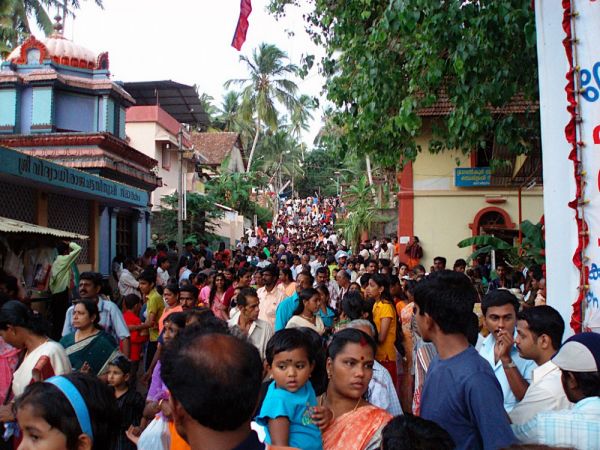Nigeria Will Soon Be Bigger Than the U.S. and Other Mind-Boggling Projections

By the year 2050 – amazingly, a mere 37 years away – the world will have two billion more people on it than it does today, and China will no longer be its largest country. Those are just a couple of the facts to be found in a UN report released today, titled “World Population Prospects: The 2012 Revision.”
The report is a feast of data points about the future, the most notable of which regard population growth in the developing world, which, to put it mildly, is expanding at a mind-boggling rate. While growth in the developed world is expected to remain flat, the population of developing regions is projected to soar from the current 5.9 billion to 8.2 billion in 2050. That’s a billion more people than exist on the entire planet today. This is occurring against a backdrop of generally slowing population growth worldwide.
“Although population growth has slowed for the world as a whole, this report reminds us that some developing countries, especially in Africa, are still growing rapidly,” said the UN Under-Secretary-General for Economic and Social Affairs in a press release.
A quick rundown of some other projections from the report:
- India’s population will surpass that of China’s around the year 2028, at 1.45 billion. Shortly after that, China’s population will begin to decrease, shrinking to about 1.1 billion by the year 2100. India’s will continue to rise for several more decades, however, before beginning its own gradual decline and hitting approximately 1.5 billion in 2100.
- By the middle of the 21st century, Nigeria will be a larger country than the United States, and by 2100 could be giving China a run for its money as the second-largest country in the world.
- More than half of the world’s population growth between now and 2050 will occur in Africa. Outside of Africa, the rest of the world will grow by only about 10 percent between now and 2100.
- Europe will shrink by 14 percent between now and 2100. Almost none of Europe’s countries are producing babies at a high enough rate to replace lost population.
- Globally, life expectancy is expected to soar in the coming decades. By 2045-2050, the average human being will live 76 years – approximately the life expectancy of the average U.S. citizen today. By the end of the century that figure will rise to 82 years (and in developed countries, to 89). Even in the world’s least developed countries, the average citizen at the end of the century will live to see 78.
If one were to extract a central take-away from all this data, it would clearly be that not only is the developing world ascending in importance, it’s ascending even faster than we thought. Population growth, life expectancy and economic output are all shifting toward the Global South with dizzying speed, with massive implications for the people who live there. In a few short decades, we’ve seen cities like Shanghai, Lagos, Lima, Mexico City, Karachi and Mumbai transform from small- and medium-sized cities into major metropolises with all the problems, promise, traffic, pollution, opportunity and economic strength that that kind of growth entails. Growth of this speed will present these cities with enormous challenges, and almost limitless possibilities.
If one thing is certain, the informal realms of these places is where most of this growth will be absorbed, its energy either suppressed by panicked governments, or converted into the fuel that propels them past the year 2100. That’s why policies put in place today that support and cultivate the informal realm will be critical to the general health and functionality of these cities tomorrow. Never in history have the lives of so many changed so dramatically in such a short timeframe. This kind of global sea change is unstoppable. Done right, that might turn out to be a good thing.









